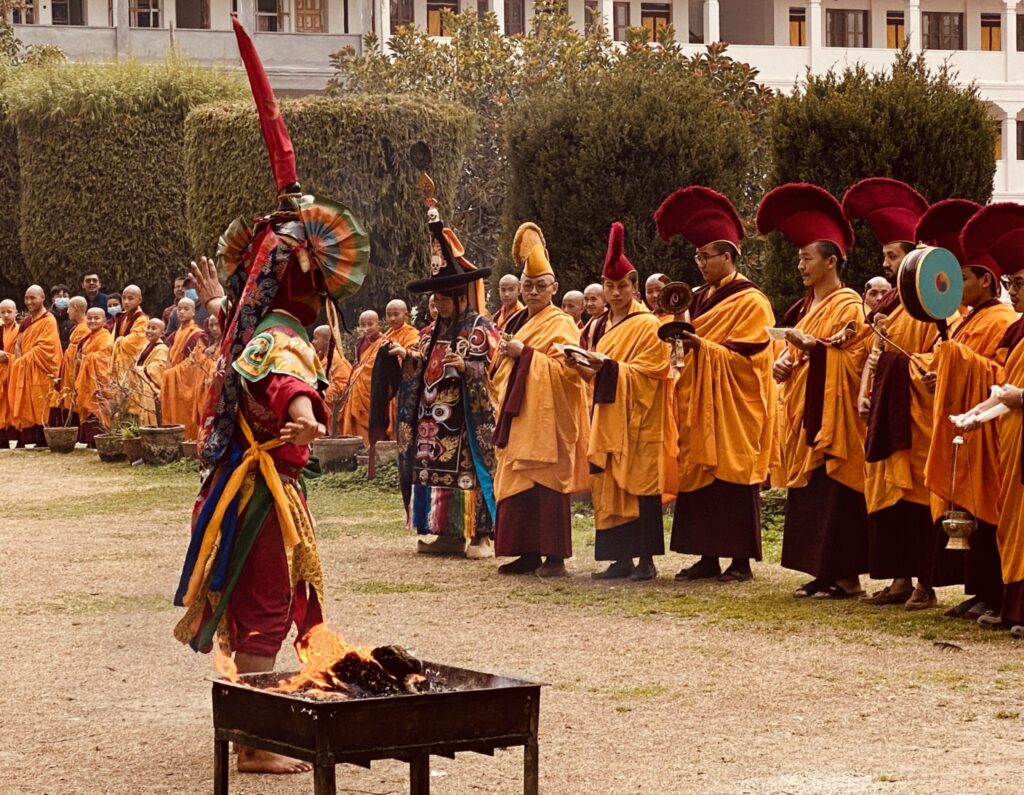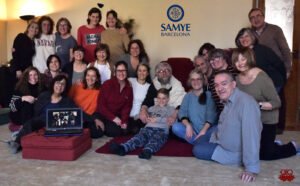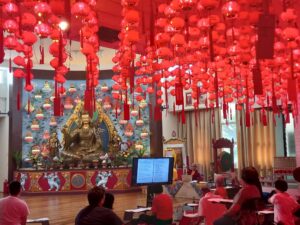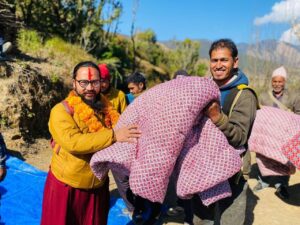Beginning the New Year
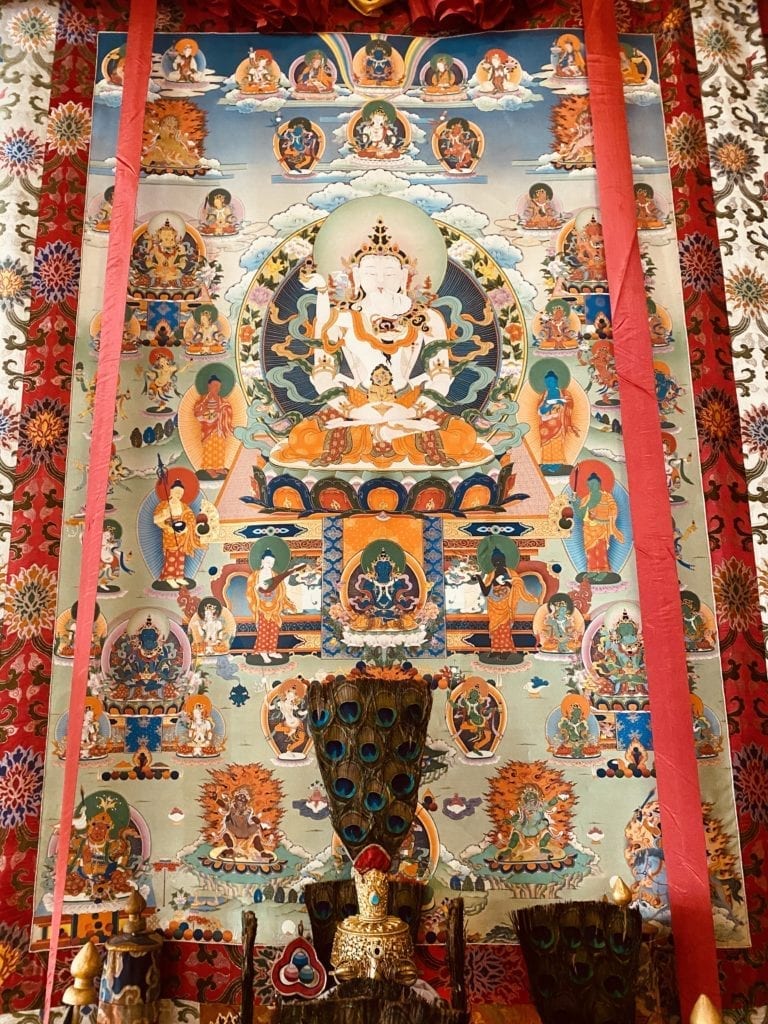
The White Amitayus (Tib: Tsekar) drubchen is the first drubchen after the Tibetan New Year. According to Drubla Sherab Dorje, the ceremonies performed before the new year help to remove obstacles, to purify, mend, and renew vows, and to bring about good conditions for our life and practice. With all these good conditions, as Vajrayana practitioners, we need a long life to be able to practice well and reach accomplishment! Fortunately, there are methods for prolonging life, and the White Amitayus practice is one of them. The White Amitayus sadhana uses many of the methods of the Vajrayana. These include the creation of a beautiful shrine as support for visualization; offerings for all the senses, such as water, flowers, incense, food and music; mantra recitation; ritual dances; empowerment ceremonies, and so on. It is truly a feast for all of the senses!
All the Buddha Families Together
I found this practice beautiful, interesting, and complete. I learned so much from it! For example, I learned that in Buddhism, diseases are caused by imbalances in the elements that compose our body and emotions. I also learned that the environment consists of the same elements. The White Amitayus practice uses the male Buddhas and their consorts of the five Buddha families to represent the pure aspect of the negative emotions and the elements. The male Buddhas represent the pure aspect of the five negative emotions, and their female consorts represent the pure aspect of the five elements. With Vairocana and Dhatvishvari of the Buddha family, ignorance and space are purified as the wisdom of dharmadhatu and pure vital essence of the space element. With Akshobhya and Mamaki of the Vajra family, anger and water are purified as the mirror-like wisdom and the pure vital essence of the water element. With Ratnasambhava and Lochana of the Ratna family, pride and earth are purified as the wisdom of equality and the pure vital essence of the earth element. With Amitabha and Pandaravasini of the Lotus family, desire and fire are purified as the discriminating wisdom and the pure vital essence of the fire element. And with Amoghasiddhi and Samayatara of the Karma family, jealousy and wind are purified as the all-accomplishing wisdom and the pure vital essence of the wind element. This is a beautiful practice to purify and heal ourselves, others, and the environment all together!
Practices for Our Times
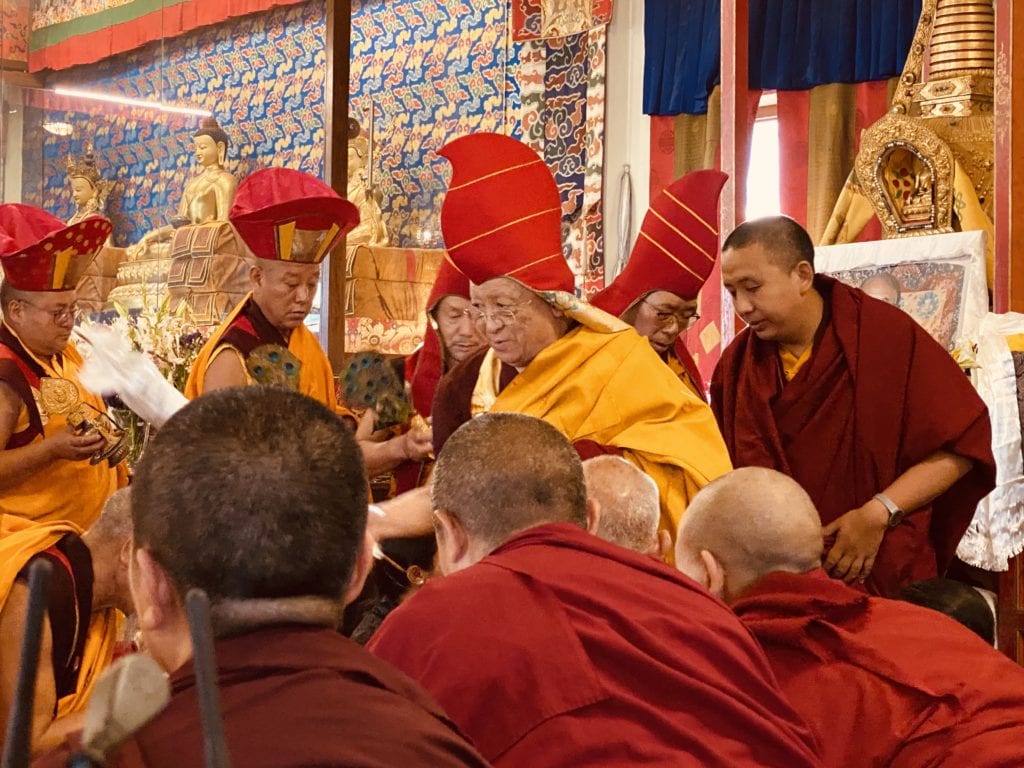
Practices such as this were taught by Guru Rinpoche for our era. Just think about it: we did this practice at a time when a new disease is scaring everyone in the world. Such a situation makes us, practitioners in the drubchen, more aware of the importance of being responsible and compassionate. Despite the scary news and the extraordinary measures to avoid the spreading of a new virus, the temple was full of practitioners, both monastic and laypeople, from early morning till evening, for the whole nine days of practice! Chokyi Nyima Rinpoche and the senior lamas were present every single day and for every session to guide us with their immense love and compassion. It was very inspiring! May this drubchen contribute to a better world and be of benefit for all.
Photos courtesy of Xavier Puigdevall.


